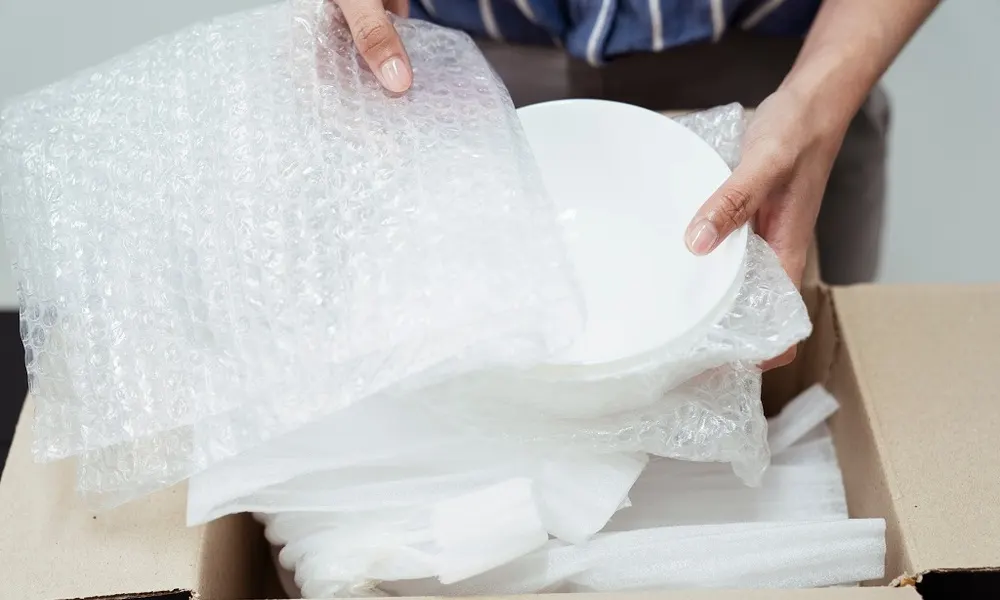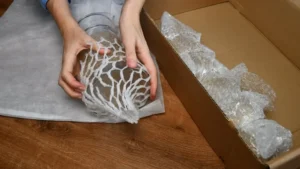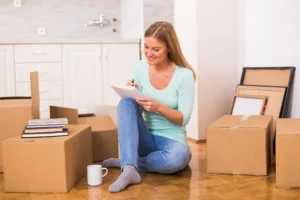How to pack plates for moving is one of the most important steps in ensuring a smooth and damage-free relocation. Plates are among the most fragile items in any kitchen, and without proper preparation, they can easily break or chip during transport. Taking the time to pack them correctly not only protects your belongings but also saves time and money by preventing replacements.
Improper packing of plates can lead to a range of problems, from minor scratches to complete breakage. Plates that aren’t cushioned well or are loosely placed in boxes may shift during the move, increasing the chance of damage. That’s why understanding the right method for packing plates for moving is crucial. Whether you’re relocating across town or across the country, proper packing for dishes reduces stress and ensures your kitchenware arrives safely at your new home.
Materials You’ll Need to Pack Your Plates
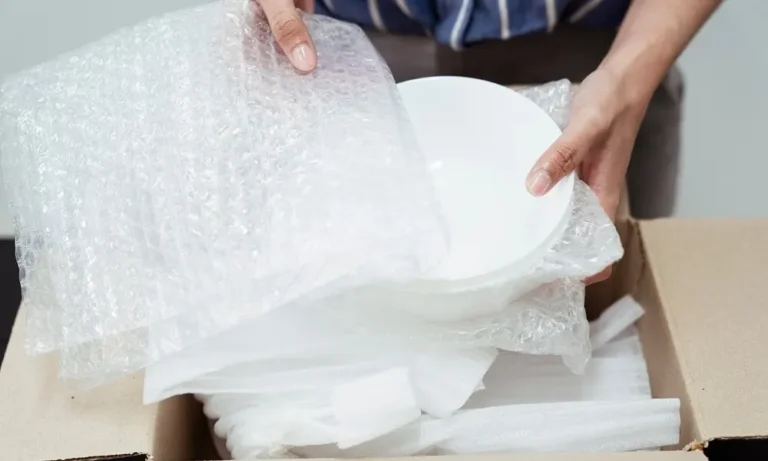
When it comes to packing plates for a move, it’s all about having the right tools and a little patience. Nobody wants to open a box of shattered dishes, right? Whether you’re packing your fine china or everyday dinnerware, here’s a checklist of everything you’ll need to do it right:
What You’ll Need for Packing Dishes:
- Sturdy Boxes
Go for dish pack boxes or heavy-duty moving boxes. They’re built to handle the weight of plates and keep them snug. - Cushioning Materials
You’ve got options here—pick what works best for your budget and your dishes:- Packing Paper (wrap each plate individually)
- Bubble Wrap (extra protection for fragile items)
- Foam Sheets (thin but effective)
- Towels or Soft Cloths (a great eco-friendly alternative)
- Dividers or Cardboard Inserts
These are lifesavers. They keep your plates from bumping into each other during the move. - Packing Tape
Make sure your boxes are sealed tight. Double-tape the bottoms just in case. - Marker for Labeling
Label each box: “Dishes – FRAGILE – This Side Up.” Trust us, future-you will be thankful.
Pro Tips for Packing Plates:
- Rather than stacking plates flat, pack them vertically, much like records. It reduces pressure and helps prevent breaks.
- Fill in any empty spaces in the box with extra paper, towels, or even socks!
- Don’t overpack. Use more boxes if you need to—your plates (and your back) will thank you.
If you want packing services in Los Angeles, then contact no other than Chamomile Go.
Step-by-Step How to Pack Plates for Moving
Packing up your kitchen? Let’s talk about the best way to pack dishes for moving—especially those fragile plates. Whether you’re moving across town or across the country, following a step-by-step method will help make sure your dishes arrive in one piece.
This is your go-to packing plate guide for a stress-free and safe move:
Step 1: Prepare the Box
- Choose a sturdy box—a dish pack box with built-in dividers is ideal.
- Line the bottom with a thick layer of padding: crumpled packing paper, towels, or foam sheets all work great.
- This creates a soft base that absorbs shock during the move.
Step 2: Wrap Each Plate Individually
- Wrap each plate completely with bubble wrap or packing paper.
- Going green? You can also use soft cloths or old t-shirts as a sustainable wrapping option.
- If needed, secure the wrapping with a little tape to keep it in place.
Step 3: Stack Plates Vertically
- Always stack plates vertically—like you’re filing records in a box.
- Why? It helps distribute pressure better and reduces the chance of breaking.
- Add a layer of padding between each plate using paper, foam sheets, or cloth.
Step 4: Fill in Gaps
- Use extra crumpled paper, rags, or bubble wrap to fill in any gaps in the box.
- This prevents plates from shifting around and getting damaged while in transit.
Step 5: Seal and Label the Box
- The package should be sealed using sturdy packing tape.
- Clearly label the box with:
- FRAGILE: Plates
- This Side Up
You can also read about moving services in Los Angeles.
How to Pack Dishes for Moving Without Paper
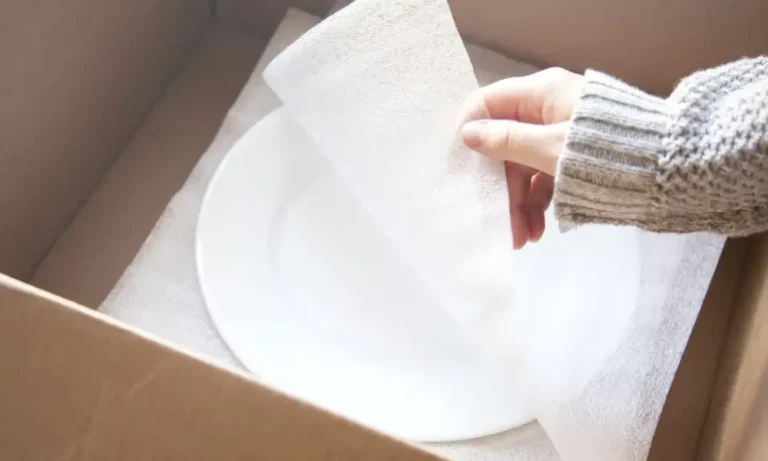
Looking for a more sustainable way to move your kitchen? You’re in luck—packing for dishes doesn’t always require piles of packing paper. There are plenty of eco-friendly (and budget-friendly) alternatives that still offer solid protection for your fragile items.
The ideal method for packing dishes for moving without using conventional packing material is as follows:
Use What You Already Have:
- Dish Towels – Perfect for wrapping plates, bowls, and mugs. Thick and cushy!
- T-Shirts – Great for wrapping and layering between dishes. Bonus: you’re packing clothes too!
- Reusable Cloths – Think microfiber or any soft fabric you’re not afraid to use for cushioning.
- Newspaper (as a last resort) – Works in a pinch, but be careful: the ink can rub off on your dishes.
Why Go Paper-Free?
- Eco-Friendly – Less waste, more reuse!
- Cost-Saving – No need to buy extra packing supplies.
- Multi-Functional – Towels and clothes pull double duty during your move.
A Quick Caution:
Verify the cleanliness of any materials you use to wrap your dishes. Dirty or colored fabrics can leave marks or even stains on your dishware—especially on white or light-colored pieces.
Common Mistakes to Avoid
Packing dishes might seem straightforward, but it’s easy to make a few mistakes that could cost you your favorite plates or bowls. Whether you’re moving across town or across the country, here’s what to avoid when packing plates for moving:
Stacking Plates Flat
- Mistake: Placing your plates flat in the box can increase the risk of them breaking due to pressure.
- Solution: Stack plates vertically like records. This distributes the pressure more evenly, reducing the chances of damage.
Leaving Space Unfilled
- Mistake: If your box has gaps between the dishes and the walls, your plates can shift during transport.
- Solution: Fill in gaps with extra packing material—crumpled paper, towels, or bubble wrap work great. This keeps your plates secure and prevents movement that could lead to breakage.
Using Weak Boxes
- Mistake: Weak or flimsy boxes can give way under the weight of your plates, increasing the risk of breakage.
- Solution: Always use sturdy, high-quality boxes designed for moving dishes (like dish pack boxes). Reinforce the bottom of the box with extra tape to ensure it holds up.
Not Labeling Boxes Properly
- Mistake: Forgetting to label your boxes or labeling them improperly can lead to mishandling.
- Solution: Clearly label each box with “FRAGILE” and “This Side Up.” This will make sure the movers know to handle it with care.
By avoiding these common mistakes, you can ensure that your plates—and all your dishes—arrive at your new home in one piece. Use these tips for the best way to pack dishes for moving and save yourself from any unwelcome surprises!
Final Thoughts
Packing plates for a move requires careful attention to prevent any breakage. Start by wrapping each plate individually in bubble wrap or packing paper, ensuring all edges are protected. Stack the plates vertically in a sturdy box, similar to the way records are stored, to minimize pressure. Fill any gaps in the box with additional packing material, like newspaper or foam peanuts, to prevent movement during transit. If you’re unsure or prefer professional assistance, don’t hesitate to contact Chamomile Go at +1 310-895-3517. Our experienced team can ensure your fragile items, like plates, are safely packed and transported. Reach out today for a stress-free moving experience!
FAQs
What Is The Best Way To Pack Plates For Moving?
The best way to pack plates is to wrap each one individually in bubble wrap or packing paper, ensuring the edges are well protected. Stack the plates vertically in a sturdy box, with packing material like foam peanuts or newspaper around them to prevent shifting. This method reduces the risk of breakage.
Should I Use A Special Box For Packing Plates?
Yes, it’s highly recommended to use dish pack boxes or boxes designed for fragile items. These boxes are thicker and provide better protection. If you don’t have a dish pack, you can reinforce a regular box with extra packing materials.
How Do I Pack Large Plates Safely For Moving?
For larger plates, wrap them carefully with bubble wrap or paper, and stack them vertically rather than flat. This helps distribute weight evenly and reduces pressure on each plate. You should also use more padding in the box to secure them tightly and prevent movement.
Can I Pack Plates With Other Kitchen Items?
It’s not recommended to pack plates with heavy items or sharp objects. To ensure their safety, pack plates separately or with other delicate items like bowls and glasses, using plenty of padding between them to avoid damage.
How Do I Prevent Plates From Breaking During A Move?
To prevent plates from breaking, make sure each plate is well-wrapped and cushioned with bubble wrap, packing paper, or foam. Pack the plates upright in the box and fill in any gaps with soft materials. Also, label the box as “fragile” to ensure careful handling.
